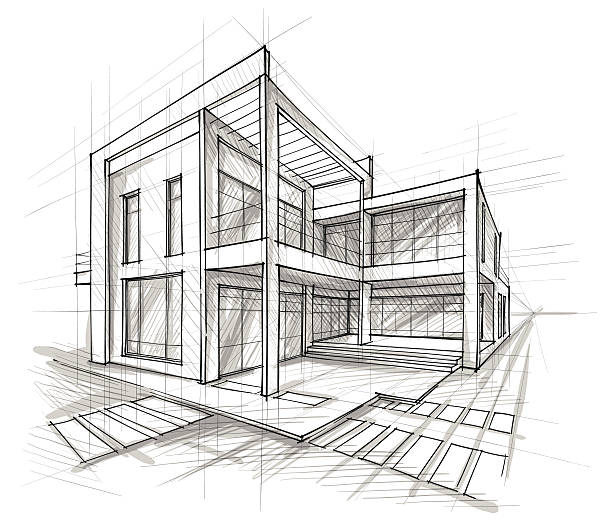Exactly How CDA Architects Integrate Eco-Friendly Practices in Architectural Projects
A Comprehensive Summary of Building Designs and Their Impact on Modern City Preparation and Growth
Building styles have long served as a mirror to the societal values and technological developments of their time, playing a vital role fit modern city planning and development. From the grandeur of Neoclassicism to the practical approach of Brutalism, each style has introduced unique concepts that affect city looks and performance. As modern obstacles occur, including sustainability and neighborhood demands, understanding these historical structures comes to be vital. The resulting dialogue not only notifies future layout techniques however likewise elevates important questions about the equilibrium between heritage and advancement in our advancing urban landscapes.
Historic Review of Building Styles

As cultures transitioned with the Center Ages, Gothic design emerged, identified by its verticality and detailed outlining, mirroring the spiritual desires of the age. The Renaissance marked a rebirth of classic ideals, combining art and architecture in innovative manner ins which influenced succeeding designs throughout Europe.

Today, architectural styles continue to progress, driven by globalization and sustainability problems, reflecting a vibrant interaction in between heritage and advancement. This historic summary emphasizes the relevance of style as a mirror of societal development and as a catalyst for urban growth.
Key Architectural Styles Explained
The variety of building designs mirrors the myriad impacts that form our developed atmosphere, each embodying distinctive characteristics and social relevances. Key building designs include Classical, Gothic, Baroque, Innovation, and Postmodernism, each standing for distinct historic contexts and aesthetic ideologies.
Classic architecture, rooted in old Greece and Rome, highlights proportion, percentage, and making use of columns (cda architects). On the other hand, Gothic architecture, growing in the Middle Ages, is identified by sharp arches, ribbed vaults, and flying buttresses, developing an angelic top quality in basilicas. Baroque architecture, emerging in the 17th century, is noted by splendour, elaborate ornamentation, and a dynamic interaction of light and shadow
Modernism, which acquired energy in the very early 20th century, prioritizes feature over form, using brand-new materials like steel and glass to create minimalist structures. Postmodernism, reacting against the austerity of Innovation, welcomes eclecticism and historical recommendation, usually including lively elements and irony.

Influence On Urban Planning
In shaping the development of cities, visit this website building designs considerably influence urban preparation choices. The selection of building style commonly determines the aesthetic appeals, capability, and total personality of urban environments.
Additionally, building designs can influence zoning policies and land use policies. Urban coordinators should take into consideration the prevailing architectural trends when designing districts, making sure that new growths integrate with existing structures. This consideration cultivates natural metropolitan landscapes and enhances community identity.
The implementation of certain architectural designs can additionally affect socioeconomic variables within a city. High-end contemporary styles might attract affluent citizens and organizations, leading to gentrification, while a lot more cost effective real estate options might prioritize useful and lasting layouts to fit varied populations. cda architects. Inevitably, the interplay in between architectural designs and city planning develops vibrant cities that mirror both historical context and modern demands, forming the lived experiences of their citizens
Sustainability and Modern Architecture
Architectural styles play an essential function in attending to contemporary difficulties, especially in the realm of sustainability. As metropolitan locations broaden and environmental concerns magnify, contemporary architecture increasingly welcomes lasting style principles that focus on energy efficiency, source conservation, and very little ecological effect.
Contemporary building activities, such as biophilic style and green design, supporter for structures that balance with their environments, using natural products and promoting biodiversity. These designs usually integrate renewable resource sources, such as photovoltaic panels and wind generators, to reduce reliance on nonrenewable fuel sources and lower carbon impacts.
Moreover, the combination of sophisticated innovations, such as clever structure systems, boosts power monitoring, optimizing source use while making certain resident comfort. Innovative water administration techniques, including rainwater harvesting and greywater recycling, further add to lasting metropolitan atmospheres.
Especially, sustainability expands past ecological problems; it includes social and economic dimensions too. By cultivating community health and advertising inclusivity, modern building designs align with lasting development objectives. The advancement of architectural techniques continues to form resilient cities that not only fulfill the demands of the existing but also guard the future for generations to come.
Community Engagement in Design
Neighborhood involvement in style functions as a vital bridge between engineers and the populaces they offer, making sure that the built environment reflects the requirements and aspirations of its customers. This joint procedure invites community members to add their understandings and preferences, fostering a sense of ownership and duty toward the areas they live in.
Effective neighborhood interaction utilizes various techniques, such as workshops, studies, and public discussion forums, to gather diverse perspectives. These techniques promote a two-way dialogue, permitting engineers to recognize regional view publisher site contexts while empowering locals to voice their worries and wishes. This inclusivity not only boosts the layout top quality however additionally advertises social equity by dealing with the one-of-a-kind difficulties encountered by marginalized groups.
Additionally, neighborhood interaction can result in ingenious remedies that might not emerge in a standard design procedure. By integrating regional expertise and cultural values, engineers can produce areas that i was reading this reverberate even more deeply with customers, boosting use and sustainability. Ultimately, prioritizing neighborhood involvement in design processes results in environments that nurture social communications, support wellness, and reinforce area ties, therefore playing a crucial duty in forming modern metropolitan landscapes.
Verdict
Architectural designs have exceptionally influenced modern city planning and advancement, reflecting evolving cultural and technological contexts. As cities continue to grow and adapt, the recurring discussion in between building heritage and modern-day design concepts will certainly continue to be essential in developing comprehensive, lively spaces that improve top quality of life and advertise social equity.